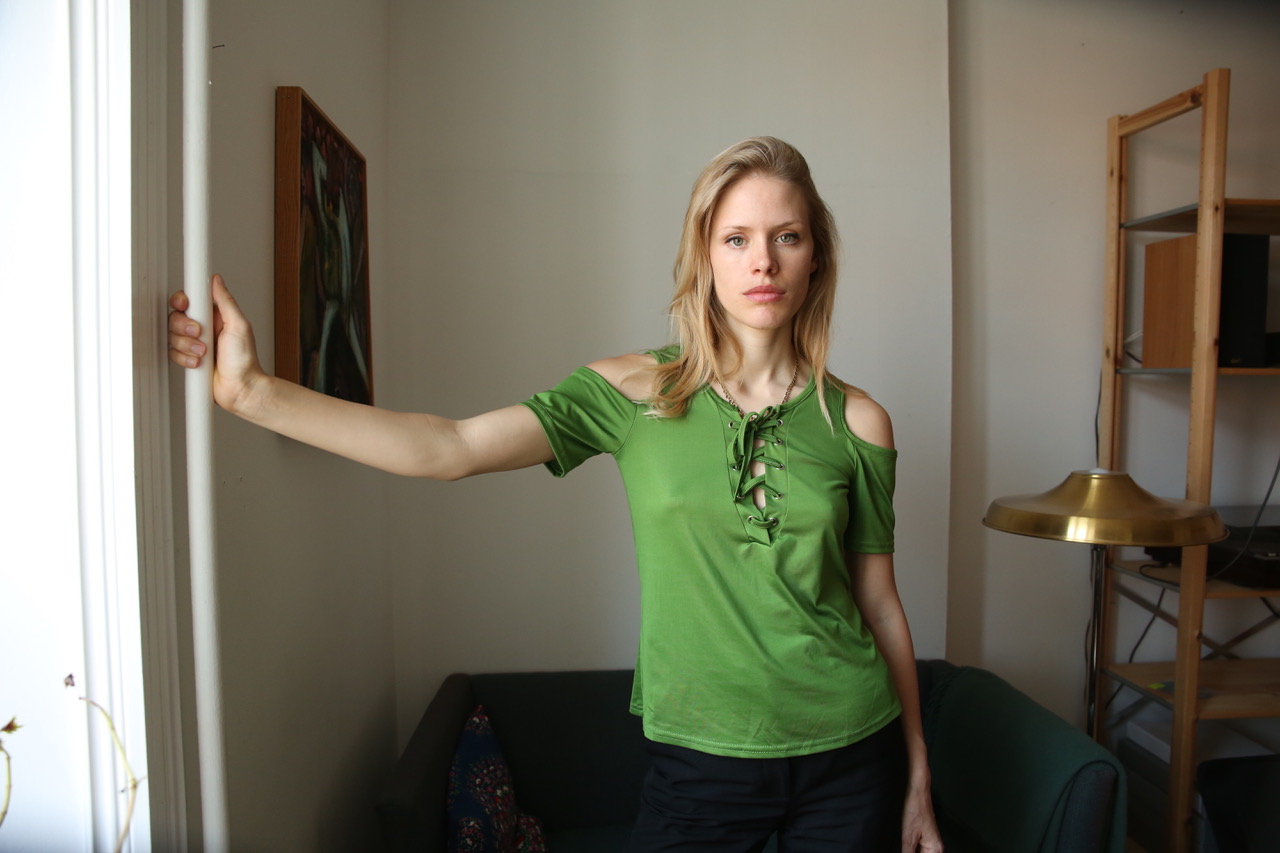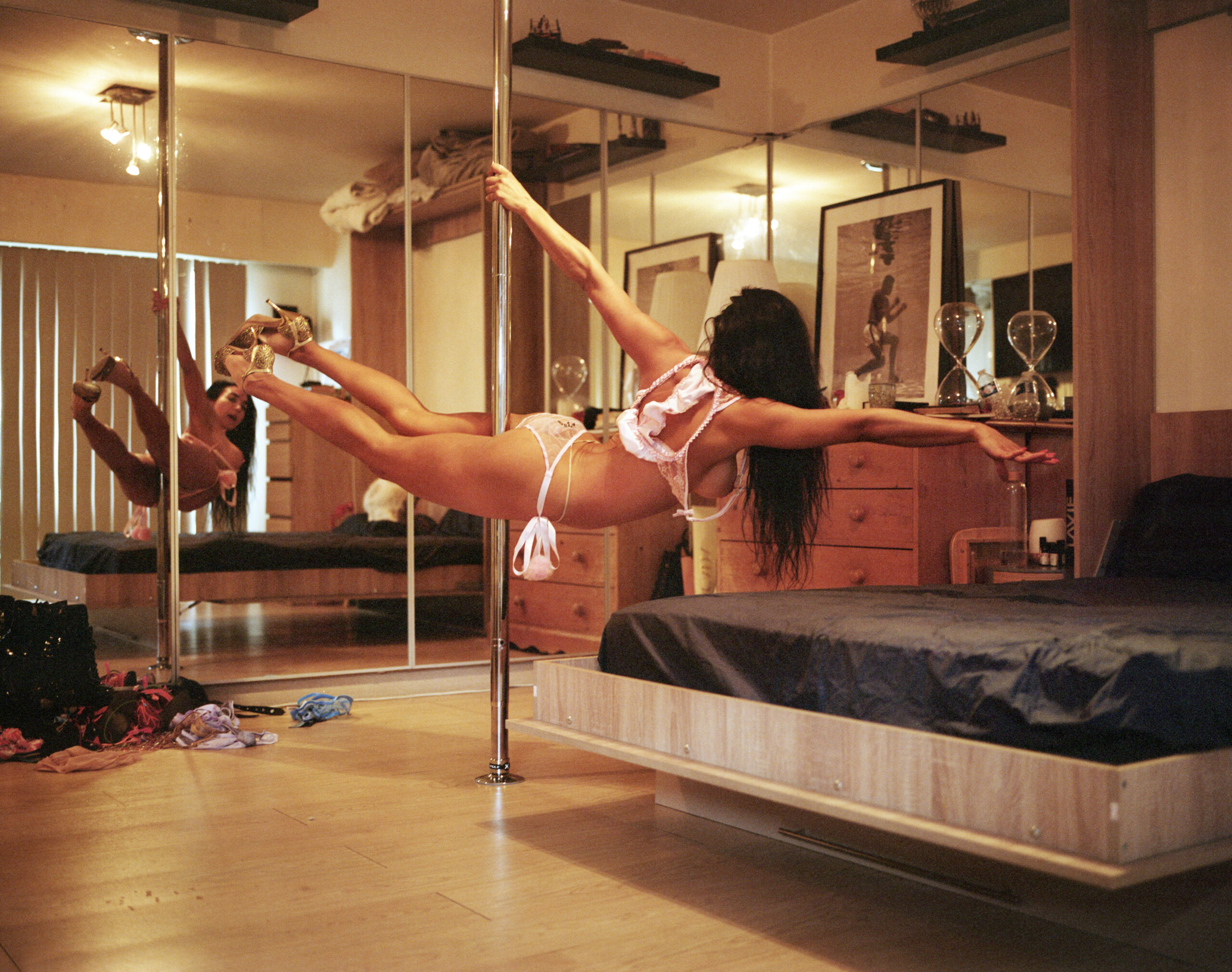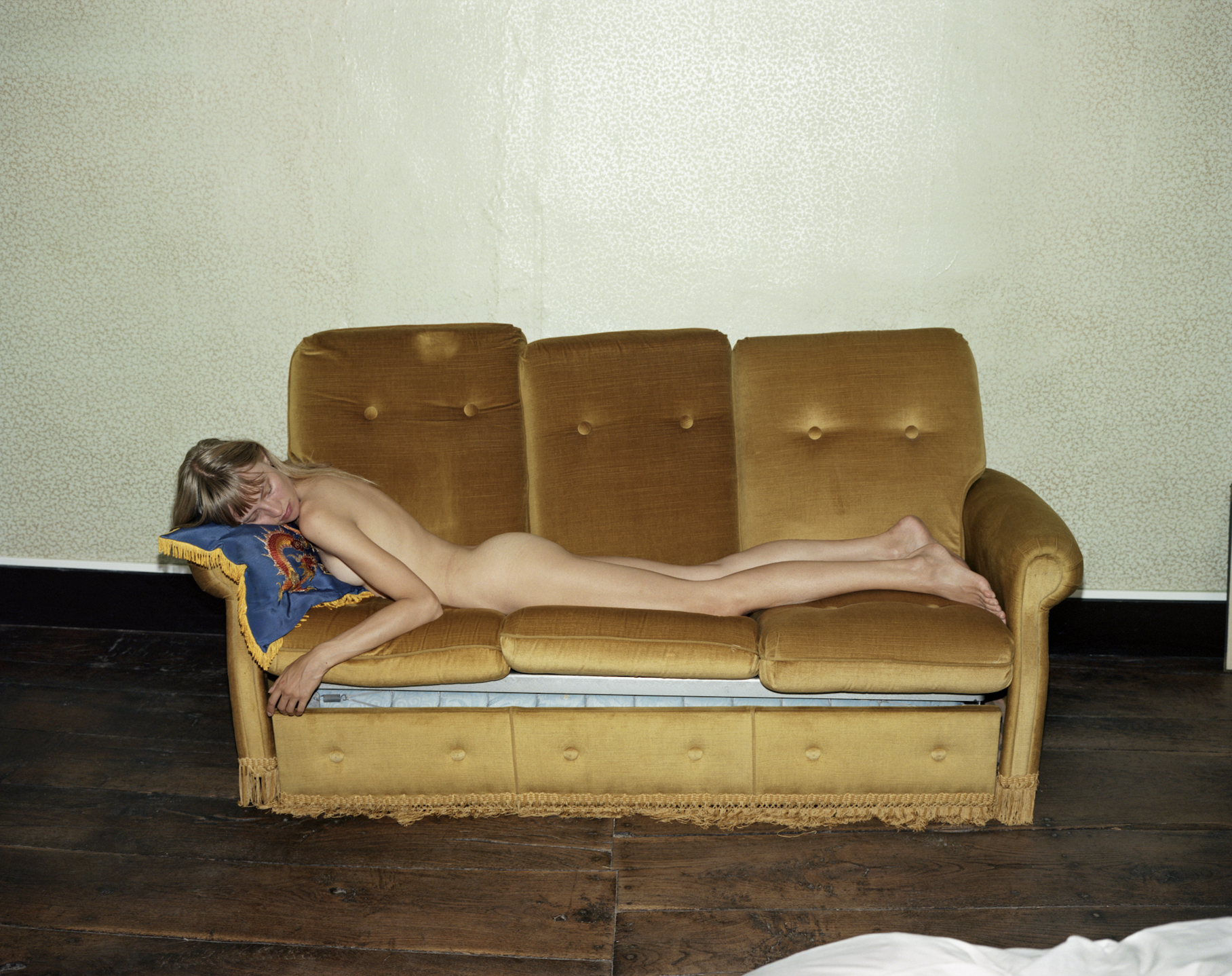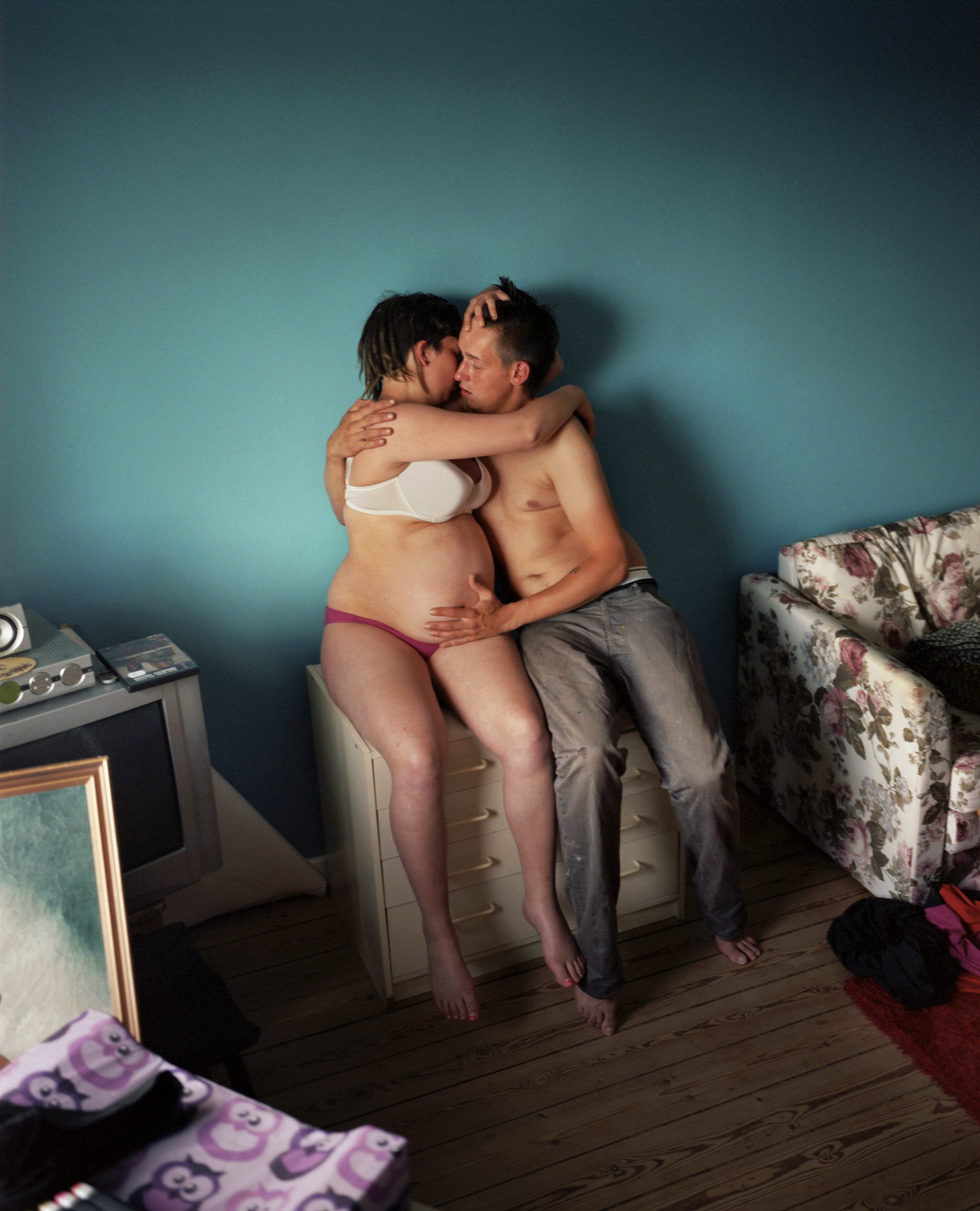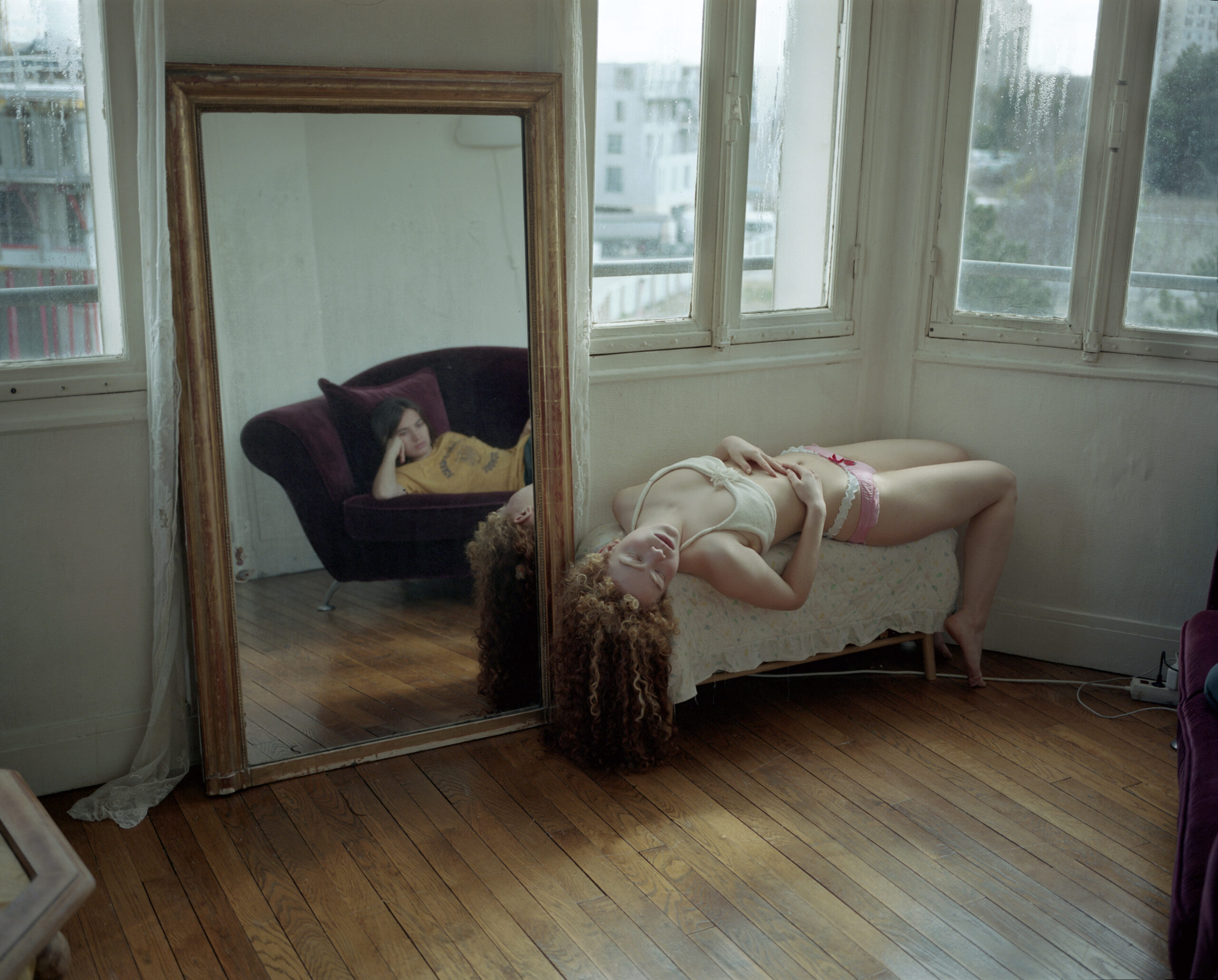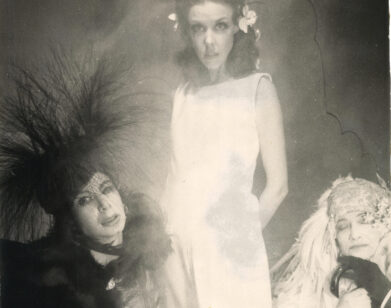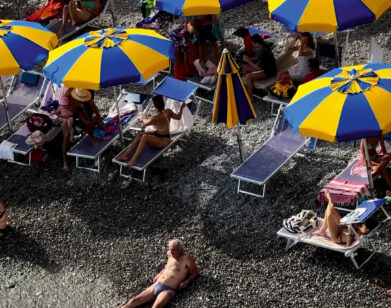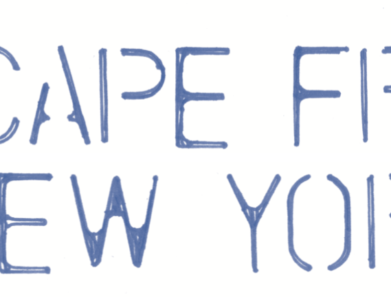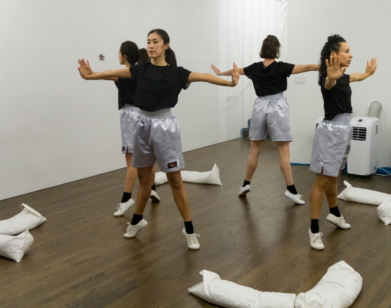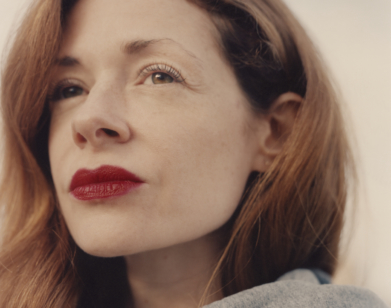CLICK
Michella Bredahl Takes Us Inside Her New Solo Show at Shoot the Lobster
Danish by birth, Michella Bredahl now lives in Montreuil just outside of Paris. The 35-year-old artist has been shooting pictures since her mother gave her a camera at the age of seven. It’s only this year that her work has begun to be exhibited publicly, alongside the release of her first book, Love Me Again. Aside from being a friend, I have also been her subject.
Bredahl first contacted me a few years ago. Growing up obsessed with the photography of the late Corinne Day, I was drawn to what I could find of Bredahl’s work online. Some weeks later, we shot together in Paris, where I was working on a script with Tess Sahara. Bredahl found us both cross-legged on my bed, bent over in front of a computer, not unlike many of the reclining women in her work. Turns out, she knew Cetin from having shot her in New York many years prior. It’s not uncommon for Bredahl to photograph the same chosen family over many years. She is also a filmmaker; her documentary short, Chassé, was selected for the Rotterdam Film Festival.
Bredahl’s first solo exhibition, Unmade Beds, opens tomorrow at Shoot the Lobster on the Lower East Side. Seven new works will be on display, four from the book. Two weeks ago, we caught up again on Zoom when I was back in New York to talk about her mother, our antennas, and spirit photography.
———
STEPHANIE LACAVA: Hi.
MICHELLA BREDAHL: You look cute.
LACAVA: Oh, thanks. My doily collar. You’re like, “Who is this person?” Well, I have so much to talk to you about. I feel like we could talk forever. We do talk forever, which is something that I’m really grateful for, but I want to start with a picture you sent me this morning of your mom.
BREDAHL: Yeah.
LACAVA: I was completely moved by it. One, she looks just like you. Two, she’s at sleep, almost in relief, as if something had happened and she fell asleep and is now peaceful. Can you tell me a little bit about this photo? And where you grew up and all of that.
BREDAHL: So I grew up with my mom and my sister, and my parents were divorced when I was around six. I moved with my mom to this place near the city and it was a vulnerable area.
LACAVA: Like a social housing complex?
BREDAHL: Yeah, social housing. And my mom wanted to be closer to the city. She met a guy who also was living in the city, so it was more convenient for her. And this was really new, because I used to live close to nature. I went horse riding. We had a garden. So everything changed in a short amount of time. But I remember it was really exciting, because it was on the third level and my mom painted all the rooms in different colors. She had this type of taste, which was dry flowers, paintings, carpet, tacky stuff. And she wasn’t well, and when we moved into this place that became really obvious for me. I remember her spending a lot of time in her bedroom and also spending time in my bedroom. I remember her coming into my bedroom and having a place of confession. The bedroom, for me, was attached to a lot of complicated feelings: love, hate, low self-esteem. I was becoming a teenager and witnessing my mom and what it meant to be a woman, and not feeling like she was a good mom. She had no boundaries, so I was really a witness to her falling apart.
LACAVA: You were the parent and she was the child, which certainly informed your point of view, which is so strong. You have empathy and a willingness to listen, and that’s also what allows you to develop these intimacies with the people you shoot. People describe your work simply as women in their spaces, but what’s important is that it’s not a production to create a certain narrative. It’s real. And that’s even more poignant than ever because even the trash we’ll see on Instagram is someone’s produced fantasy photo. Your style comes through, despite these being other people’s environments. Was it your mother who gave you your first camera?
BREDAHL: Yeah, in the late ’90s with the snapshot cameras. I remember my mom always taking pictures and getting them developed and putting them in books. The first camera I ever shot with was her camera. There’s one picture that I really love of her where she’s coming out of her bedroom wearing only a G-string and she covered her breasts with her arms. And later I found a picture that she’d taken of me as a little girl where I was covering myself the same way because I was topless. As a kid, you’re mirroring the adults that surround you, and when you grow up in a home where the roles are shifted, you find other ways to communicate. I think the camera became a way for me to deal with what was happening. I remember taking images of my sister, and when I would go on school trips, I got my own camera and my girlfriends and I would take pictures of each other. You could always see our bellies and we were putting on makeup. I was 12, so it was very innocent, but in a way it was also sexualized. We wanted to stage the pictures to look really hot.
LACAVA: That staging is essential to being a teenage girl. It’s trying to figure out your body and your image, and that part’s not staged.
BREDAHL: I feel like it’s still happening with Instagram. Young girls are still taking these pictures. What’s problematic is that everyone’s witnessing it. At such a young age, you’re so fragile and people will take advantage of that. Looking back at all of the pictures I would take with my friends, it’s a space where we could express ourselves, and it’s important that that space exists when you’re a teenager. I was really sexual at a young age, and looking at pictures, I see proof.
LACAVA: From there, you became a model before photography really found you. Were you scouted?
BREDAHL: Yeah. I was 14 and I just moved to live with my aunt and my cousin. So I got a job in a video store and a woman came in. I remember I had a liter of Coca-Cola and I was eating a bag of chips. She rented a film and she was looking at me, and then five minutes after I got off my shift, she stopped me outside the video store and told me, “You’re really beautiful. How tall are you?” I was wearing high heels. I was really excited because I wanted to model. She asked me to drop by the agency, which I did. My first job was a test shoot for a magazine, and the reference was Pamela Anderson. I was really excited to do the shoot, but I also felt really uncomfortable because they asked me to do a picture with a see-through top. I said I didn’t feel comfortable, so we didn’t do it, but I left the shoot feeling like I had not done a good job. Then very quickly I was sent to Milan. I would stay in hotels with other girls. We would share two room apartments. Now as a grown woman, I don’t think it was safe at all. I remember being recruited to nightclubs with 25 girls to have dinner. I can only speak from my own experience, but I don’t think at 16 you should be sitting at a table with 35-year-old men and being served a lot of alcohol.
LACAVA: We hear a lot now about what went on and how horrible it was. What strikes me about it is that it was not a sisterhood you wanted to recreate. You have never shot girls in the modeling house together. These models are being grouped together because they’re the same breed of some kind, and I think you being unattracted to that also speaks to what you are attracted to. Let’s talk first about Vic [Carmen Sonne], who’s on the cover of your book.
BREDAHL: I met Vic because she was acting in Neon Heart, a film I was asked to do stills on. We became really good friends. One of the pictures in the book is of her from the set where we were shooting the film and she’s topless in the bathroom. The second time I met her was when I shot her in her home, in the purple room, which is also in the book. We both are from Copenhagen and I feel like we’ve grown up together in that art scene and party scene. I’ve known her for maybe eight years now, and she always had a lot of trust in my work and my eyes. She’s an incredible actress and human being. She’s shooting this film in Denmark now, and [at my Paris book launch] we made a cake with the cover picture of her, so she was saying that she’s here as the cake.
LACAVA: [Laughs] Some people jump out of a cake. She was the cake.
BREDAHL: But I’ve heard other photographers use the word “muse,” where you have someone that makes you want to take pictures. But it goes both ways. She tells me, “When you photograph me, I really feel inspired.” It’s really a collaboration. I’ve even thought about having her in one of my films one day, as I also make films. My relationship to the people I work with is long-term.
LACAVA: You did a short that was at Rotterdam [International Film Festival]. Can you tell me about that?
BREDAHL: It was called Chassé, which comes from ballet and refers to one foot following the other, which is also someone being hunted. The film deals with parental failure and young teenagers who have found a place to express themselves through dance. The film was like a mirror, because I use the camera as a way to express myself. I introduced the mothers in the film as well because I didn’t want to blame anyone. I wanted to give space to talk about pain if you’ve grown up in a family where you feel that love has not been the core. I see it as a circle. If you’re a mother who’s not able to take care of your kid, it’s often because your mother didn’t teach you to be a good mom. I just wanted to give both the parents and the kids a place to talk about what it means to fail. I went to the festival with one of the lead actresses, who’s also in the book, and that was such a beautiful experience.
LACAVA: Can we talk a little bit about your relationship to Klara [Kristin]? The reader might know her as the blonde third in the threesome in Gaspar Noé’s Love. I love that photo of her and her baby in the bathtub so much.
BREDAHL: Klara is actually here in my house today. When I moved to Paris, I moved to a spare room in Klara’s aunt’s house and she actually helped me to get a place here. I started photographing Klara also seven or eight years ago. Love had just come out, and when I saw it and realized she was Danish and from the same area that I was, I texted her. And then she invited me over because I asked if I could take a portrait, and we ended up talking and becoming friends instead. I remember her saying, “I think I need a friend more than I need someone to take my pictures right now.” Maybe a year later, I took her first portrait. We’ve gone through periods where it was hard, because when I started out, I didn’t have a language to express what I wanted. Sometimes she would feel uncomfortable and she taught me to explain what I was looking for.
LACAVA: She taught you how to be a director.
BREDAHL: I think in the world she’s in, it’s constantly either you’re in or you’re out, so it’s been nice to have a photographer on the side who’s going to photograph her no matter what. She just had a baby, who’s also here, and a photographer friend of ours took a picture of us three together with the book.
LACAVA: Love that. You told me about a painting you remember from your childhood by the Danish painter, P.S. Krøyer. It’s an image of two women walking on the beach dressed in white. One has a hat and one has a yellow ribbon, which also reminds me of you because I feel like you pick up flashes of yellow. They are painted by a man, but there still is that idea of them walking on the beach alone. They’re for each other. Then you mentioned to me The Little Mermaid in Denmark [a statue in Copenhagen], and the fact that she’s crouched over, almost like she’s covering something. They’re both relevant to the girls [you photograph] in moments of repose or relaxation. It’s not the same energy as a fashion shoot. It’s something very, very different.
BREDAHL: I remember my mom’s boyfriend would always say that the picture looked like my mom, and that’s how I saw her. My mom was always uncomfortable in her body. She never thought of herself as someone strong, and she didn’t think she was a good mom or that people loved her. When I photograph someone, I have that image with me all the time, and it helps me to open someone up when I photograph them. That experience of seeing my mom’s suffering has allowed me to believe that there’s more than what I see. I think that’s why people say they feel seen when I photograph them and they don’t know why.
LACAVA: I think that’s the most important thing about your work. You were recently involved in the ALL-IN show. You walked in the show and you’ve been shooting for them. But there’s a mystical, intuitive thing where you present things that can’t be explained, and you’re able to do that because of your antennas and sensitivities.
BREDAHL: I think you’re right. I modeled for ALL-IN the last two years, and I feel that they have the same sensitivity when they work with people. There is a lot of respect, and it’s not just about me modeling, it’s really about me, in a way. They have an approach that is more human.
LACAVA: Maybe that’s where we want to go collectively with images, to a place that is more human, more sensitive. It’s not just about this color correction or that gradient, but it’s literally something that’s unspeakable. When they used to do ghost photography where the spirit would show, but it was never exact, I think there’s a little bit of that in your photos.
BREDAHL: Thank you. That means so much.
LACAVA: And having sustained intimacy. Working with people, not based on some kind of fame currency, but actually sticking it through. That’s what most interests me about your photos. Thank you for doing the interview.
BREDAHL: Thank you.

